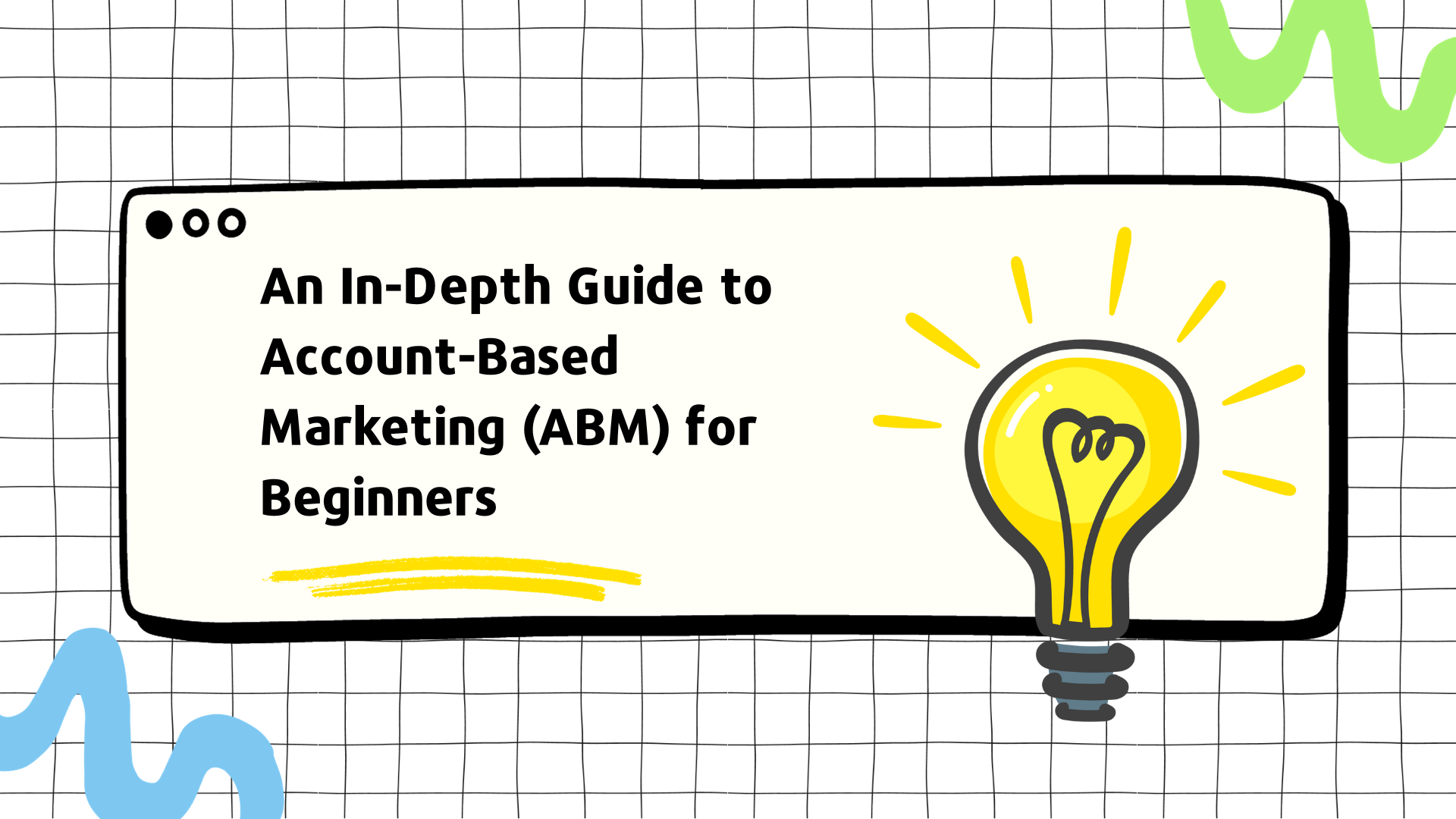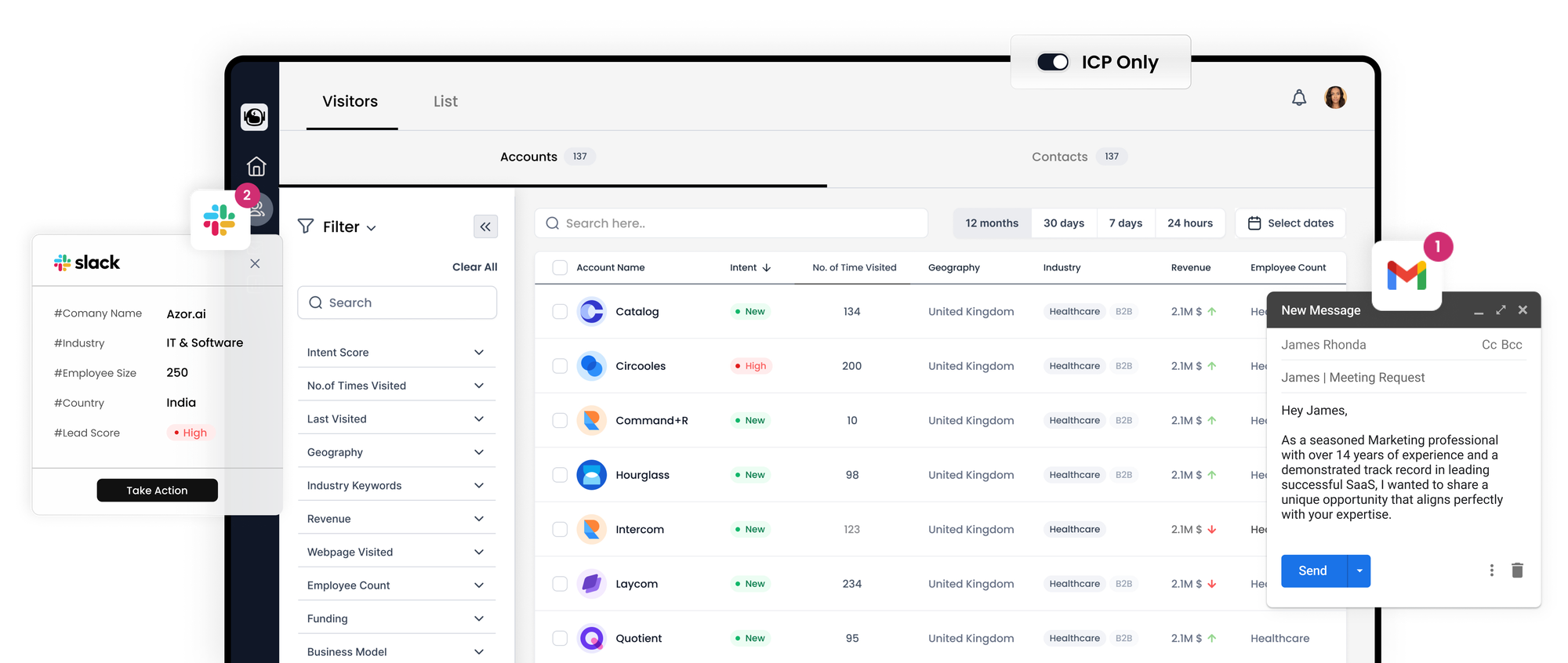An In-Depth Guide to Account-Based Marketing (ABM) for Beginners

Account-Based Marketing (ABM) has emerged as a significant trend in the digital marketing world, particularly in the B2B sector. This comprehensive guide delves into what ABM is, its effectiveness, and how businesses can implement this strategy effectively.

Understanding Account-Based Marketing
1. What Is ABM?
- ABM is a focused approach in marketing where individual business accounts are treated as markets of one.
- It involves identifying high-value accounts or prospects and targeting the key stakeholders within these organizations with personalized marketing strategies.
- The essence of ABM lies in its tailored approach, catering to the specific needs and personas of high-value accounts rather than a broad audience.
2. ABM's Rise in Popularity
- The trend towards ABM has seen significant growth. A 2016 study by Sirius Decisions reported a substantial increase in companies adopting ABM-specific programs, with a marked rise from 20% in 2015.
- ITSMA's research further underscores ABM’s effectiveness, noting that it often delivers higher ROI than other marketing methods.
3. The Allure of ABM
- For businesses struggling to align sales, customer success, and marketing, ABM presents a compelling solution.
- Its focused nature allows for more efficient use of marketing resources, targeting accounts that offer the highest revenue potential.
Evaluating the Suitability of ABM for Your Business
1. Assessing ABM’s Relevance
- While ABM has proven effective, it's not a one-size-fits-all strategy. It's typically more suited to B2B enterprises with large sales teams and stakeholder groups.
- Smaller businesses or those with fewer than 1,000 employees might find ABM less practical due to resource limitations.
2. Potential Benefits of ABM
- ABM can initiate the sales process with higher-value opportunities earlier and align marketing and sales efforts for better long-term success.
- It's particularly beneficial for companies looking to maximize their marketing ROI and improve sales alignment.
3. Automating ABM
- Automation tools like Terminus can facilitate ABM by integrating sales and marketing data, making the strategy more accessible and manageable.
Step-by-Step Guide to Implementing Account-Based Marketing Successfully
Account-Based Marketing (ABM) represents a shift from traditional marketing methods, focusing on specific organizations rather than broad demographics or personas. This targeted approach requires meticulous planning and execution. Below are six essential steps to effectively implement ABM, ensuring your strategy is both efficient and impactful.
1. Define Your Strategic Accounts
- Transition from Persona to Organization Focus: In ABM, the emphasis is on marketing to entire organizations rather than individual personas.
- Criteria for Selecting Accounts: Identify organizations that contribute significantly to your Monthly Recurring Revenue (MRR). Consider factors like industry, company size, location, annual revenue, upsell potential, and profit margin.
- Research Process: Combine quantitative data and qualitative insights from sales and customer success teams to identify high-value accounts. Utilize frontline employee experiences and supporting data to ensure targeted account selection.
2. Conduct Thorough Research
- Collaborate with Strategic Thinkers: Partner with sales experts to identify matching organizations and key stakeholders.
- Deep Dive into Target Organizations: Investigate decision-making processes, identify decision-makers, and gather detailed insights about the organizations.
- Tools for Research: Leverage your CRM, LinkedIn, and other social networks for comprehensive information gathering.
3. Create Personalized Content & Messaging
- Develop Stakeholder-centric Content: Craft content that addresses the specific pain points of stakeholders in target organizations.
- Collaboration for Effective Content: Work closely with your design and sales teams to create visually engaging and message-accurate content.
- Personalization is Key: Ensure that your content is tailored to resonate with the unique needs of each target organization.
4. Select Optimal Channels for Campaigns
- Target Stakeholders on Relevant Platforms: Determine where your target stakeholders spend time online and their mindset on different platforms.
- Platform-Specific Strategies: Use platforms like Facebook and LinkedIn for targeted campaigns based on organization and job titles.
- Channel Strategy: Consider the preferences and online behaviors of your target audience to choose the most effective channels for your campaigns.
5. Execute Your Account-Based Campaigns
- Launch with Caution: Be mindful not to overwhelm your prospects with repetitive messages across multiple channels.
- Broad Organization Targeting: Remember to target the organization as a whole, not just individual stakeholders.
- Balance in Messaging: Aim to capture attention without being overbearing or intrusive.
6. Measure & Evaluate Campaign Performance
- Analyze Campaign Effectiveness: After running the campaign for 30-60 days, assess its impact based on engagement, stakeholder expansion, funnel progression, and revenue generation.
- Continuous Improvement: Use measurable results to identify areas for improvement and refine your strategy accordingly.
- Celebrate Successes: If ABM proves highly effective, continue to refine and enhance your approach for sustained success.
Conclusion
Implementing ABM is a strategic journey that requires a deep understanding of target organizations, personalized content creation, careful channel selection, and continuous performance evaluation. By following these steps and adapting based on measurable outcomes, businesses can harness the power of ABM for more focused marketing efforts, better alignment with high-value accounts, and ultimately, improved ROI on marketing campaigns. Remember, ABM is not just a tactic but a strategic approach that aligns marketing efforts with the specific needs and dynamics of high-potential accounts.
